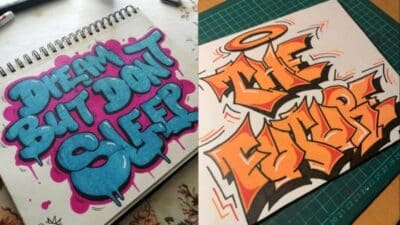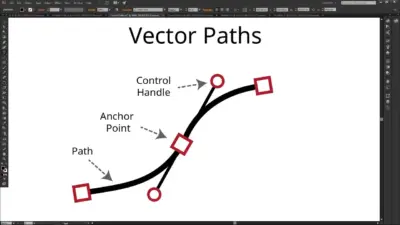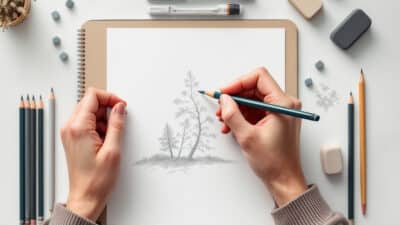Ink drawing is a unique form of art that combines creativity and technique. Artists can express themselves through various styles that showcase their individuality. Exploring 12 stunning styles of ink drawing reveals the versatility of this medium and inspires others to try their hand at it.


From fine lines to bold strokes, each style brings something different to the table. Whether it’s technical pen work or free-form scribbles, there’s a technique for everyone. Discovering new methods can spark inspiration and encourage artists to push their boundaries.
Ink drawing is not just about putting pen to paper; it can extend to different surfaces and applications. Engaging with these styles can help artists develop their skills and deepen their understanding of this expressive art form.
Key Takeaways
- Ink drawing offers various techniques and styles for all skill levels.
- Experimenting with different ink styles fosters creativity and inspiration.
- The medium can be used on various surfaces, broadening artistic possibilities.
The Essentials of Ink Drawing
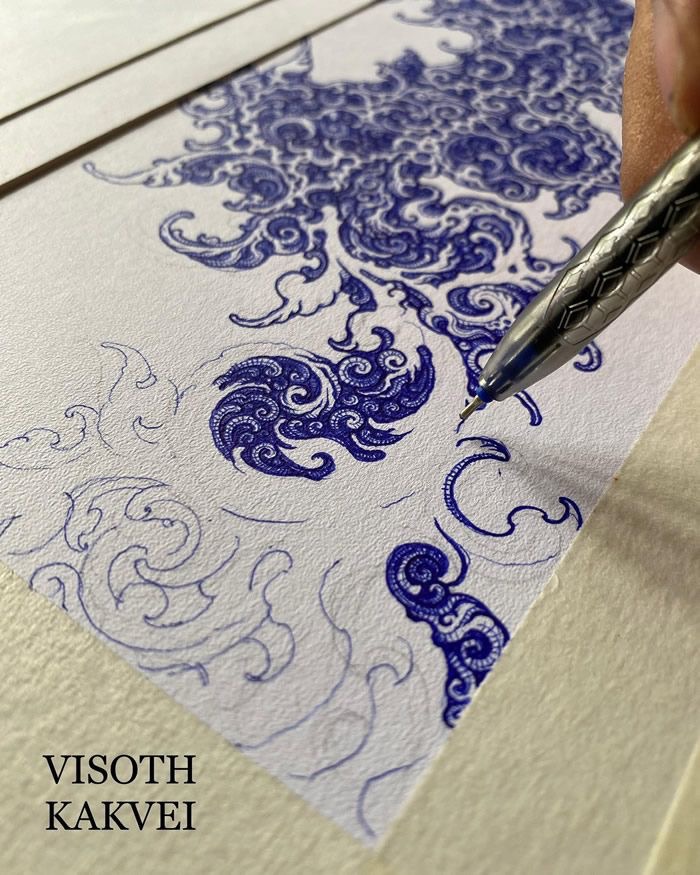
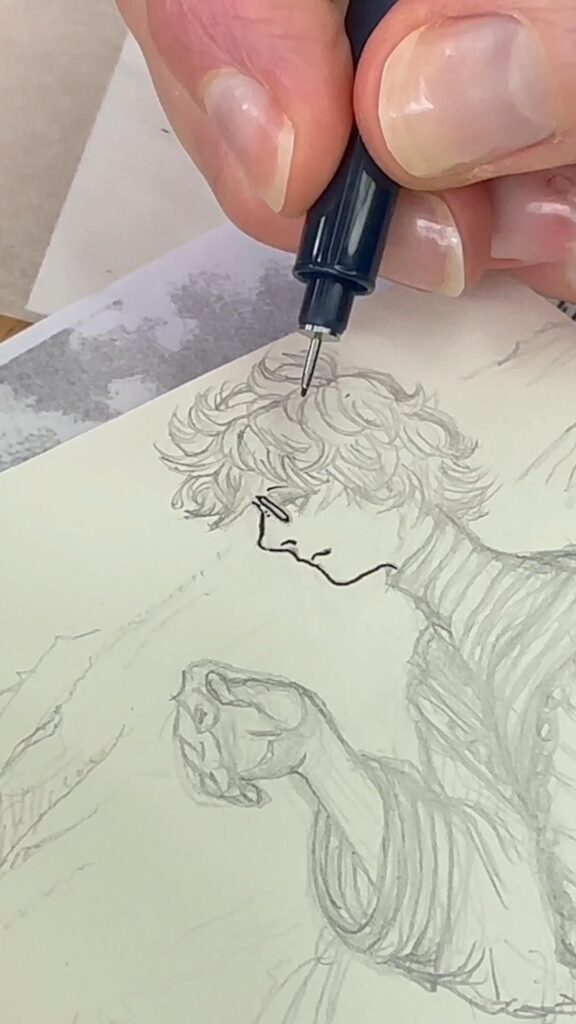
Ink drawing requires specific tools and a good understanding of the medium. Knowing what materials to choose will enhance the drawing experience and improve the final outcome.
Understanding the Medium
Ink is a versatile medium that offers various textures and effects. It can be used for detailed line drawings or bold strokes.
Different types of ink are available, such as permanent, waterproof, and drawing ink. Each type serves a specific purpose. Permanent ink is great for lasting results, while waterproof options help prevent smudging when mixing with water.
The choice of paper also matters. Smooth paper like Bristol board is preferred for clean lines, while textured paper creates interesting effects. Understanding these properties helps artists make informed choices for their projects.
Choosing Your Materials
Knowing what materials to choose will enhance the drawing experience and improve the final outcome. If you’re intrigued by this art, you might also be interested in the works of artists like Alphonso Dunn or Angela Raker.
Selecting the right tools enhances the ink drawing experience. Ink pens and brushes are common choices. Pens come in various styles, including fine liners and nib pens, offering different line widths.
When choosing paper, artists often prefer Bristol board or any smooth paper for precise work. A ruler can help create straight lines, while erasers are handy for mistakes.
Consider the ink nibs for versatility. Different nib sizes produce various line qualities. Adding markers can also help with shading and contrast. Understanding these materials can lead to more impressive ink drawings.
Fundamentals of Ink Techniques
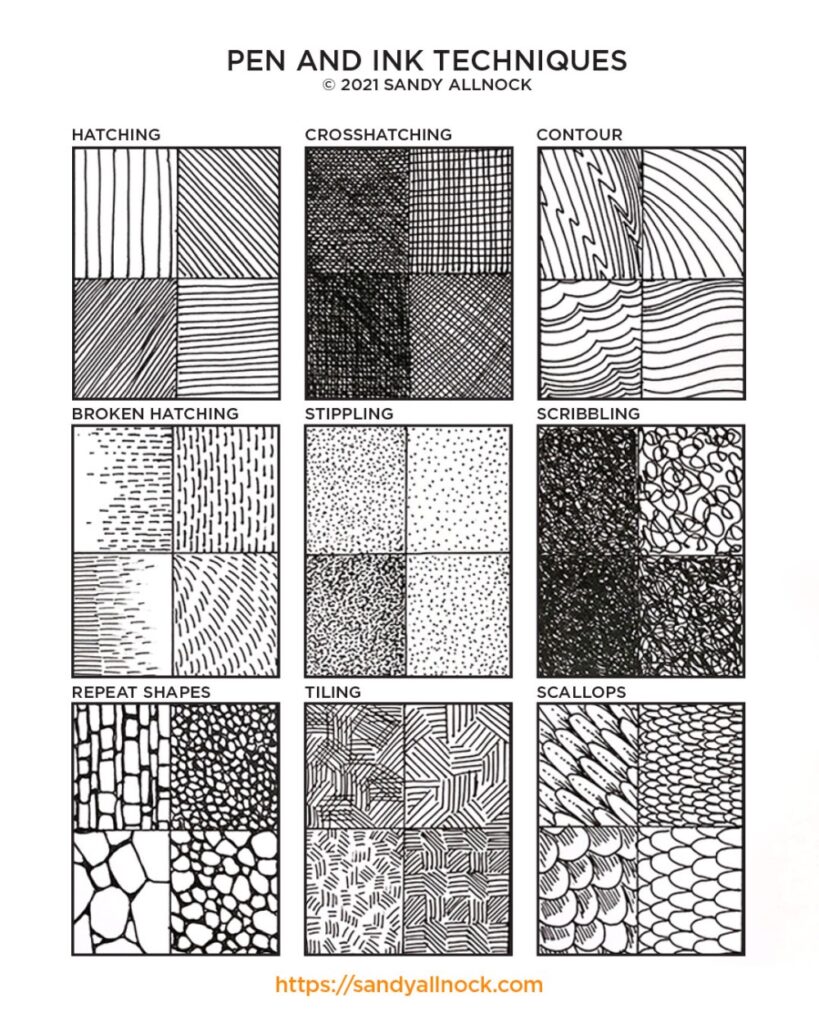
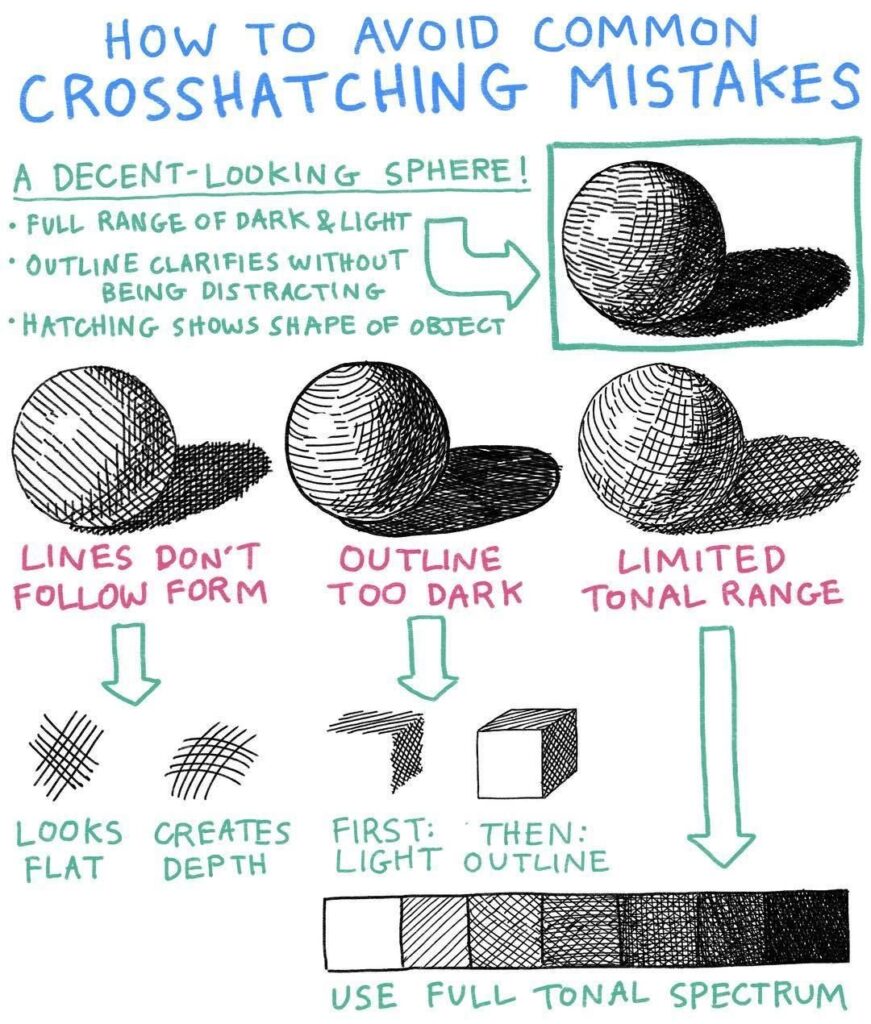
Ink drawing involves various techniques that shape the artist’s style. Mastering these techniques can enhance the quality and expression of artwork. Here are some core methods to explore.
Mastering Strokes and Lines
Understanding basic strokes is essential in ink drawing. Artists use different types of strokes to create texture and movement. Types of strokes include:
- Straight lines: Used for outlines and structure.
- Curved lines: Add softness and flow to the drawing.
- Dotted lines: Create a lighter touch.
Practicing these strokes helps an artist get familiar with their tools, whether it’s a dip pen, brush pen, or fine liner. Controlling pressure allows different widths, which adds depth. Experimenting with speed also affects line quality, making it important to work at a comfortable pace.
The Art of Hatching and Cross-Hatching
Hatching is a technique where closely spaced parallel lines create shading. This method uses the direction and density of lines to achieve different effects. Cross-hatching takes it further by layering lines in different directions.
To practice, start with simple shapes like squares or circles. Fill them in with hatching, then add cross-hatching. Vary the spacing and angle to see how it changes the shading. Benefits of these techniques include:
- Depth: Adds dimension to flat surfaces.
- Texture: Creates the illusion of different materials.
Hatching and cross-hatching can be combined with stippling, which involves dotting ink for shading. These methods give artists more tools to express light and shadow effectively.
Exploring Ink Wash Techniques
Ink wash provides a different approach to ink drawing. This technique uses diluted ink to create gradients and soft washes of color. It’s effective for backgrounds or to add depth to a piece.
To begin, the artist can prepare different concentrations of ink. A brush is the best tool for applying washes. Practice controlling the amount of water used, as it affects how light or dark the wash will be. Techniques can include:
- Wet-on-wet: Applying wet ink on a wet surface for smooth blends.
- Dry brushing: Using a dry brush to create texture and fine details on a dry surface.
Combining wash techniques with other methods like hatching can create more dynamic drawings. Each artist can find unique ways to blend these techniques into their style.
Compositional Elements in Ink Drawing


Ink drawing relies heavily on compositional elements that help create a pleasing image. Important aspects include balance, proportion, light and shadow, and the use of textures and details. Focusing on these elements helps the artist guide the viewer’s eye and create a strong impact.
Creating Balance and Proportion
Balance is key in ink drawing. It refers to how visual weight is distributed in the artwork. Artists can achieve balance through symmetry or asymmetry.
- Symmetrical Balance: This occurs when elements are evenly arranged around a central point.
- Asymmetrical Balance: This uses different elements that still create a sense of stability.
Proportion helps maintain the relationship between different parts of the drawing. For example, making sure objects are sized correctly relative to one another keeps the viewer engaged. It can also guide the focus toward key areas, boosting the overall effectiveness of the drawing.
The Role of Light and Shadow
Light and shadow add depth and dimension to ink drawings. They help create a three-dimensional effect that draws the eye in.
- Light Source: Identifying a light source is essential for realistic shading.
- Shadows: Applying shadows in the right areas enhances contrast and highlights shapes.
Shading techniques, like hatching and cross-hatching, help to soften edges and provide depth. Using a range of values from light to dark makes the drawing more dynamic and interesting. This variation keeps the viewer’s attention.
Incorporating Texture and Detail
Textures can add richness to an ink drawing. Varied line work creates different textures, from smooth surfaces to rough, textured areas.
- Line Quality: Thin lines can suggest delicacy, while thick lines convey strength.
- Detail: Incorporating intricate details contributes to the overall impact of the piece.
Using textures can guide the viewer’s focus. Attention to detail can elevate the artwork and provide a sense of realism. Mixing textures also creates visual interest, enhancing the narrative within the drawing.
Developing Drawing Skills


Improving drawing skills takes time and dedication. Focusing on specific techniques and nurturing a personal style are key steps in this journey.
Practice Techniques for Improvement
Regular practice is essential for developing drawing skills. Start by setting aside time each day to sketch. This can be a simple exercise, like drawing everyday objects or practicing different shapes.
Here are some effective techniques:
Gesture Drawing: This is quick sketching that captures the movement of the subject. Limit each drawing to a few minutes to focus on form and flow.
Study from Life: A figure or landscape can inspire creativity. Drawing from real life sharpens observation skills and helps with proportions.
Use References: Art books and online tutorials provide examples. Analyzing different styles can help refine techniques and spark imagination.
Building Your Unique Style
Developing a unique style is a rewarding aspect of drawing. Encouraging personal expression will make art more fulfilling. Experiment with various pen and ink techniques to find what resonates.
Tips for building a unique style include:
Mix Techniques: Combining line work, shading, and patterns can create interesting effects. Don’t be afraid to try out new tools and materials.
Create a Series: Focusing on a specific theme can help in finding a style. This gives a chance to develop a consistent voice in the works.
Reflect on Work: Taking time to review past drawings allows for growth. Understanding what worked or didn’t can guide future exploration.
With practice and exploration, anyone can develop their skills and find a unique artistic vision.
Ink Drawing in Practice


Ink drawing is a fun and creative process. Artists often start with sketchbooks to explore different ideas. This practice helps improve their skills and find inspiration for their final pieces.
Sketchbook Explorations
Sketchbooks are the playground for artists. They allow free expression without the pressure of perfection. Many beginners find that doodling or doing quick sketches helps build confidence.
Tips for using a sketchbook:
- Draw daily: Even quick sketches enhance skills over time.
- Experiment: Try different styles, subjects, and techniques.
- Make mistakes: Mistakes are learning opportunities that lead to growth.
Artists often find inspiration from their surroundings or other artwork. Sketching from life, such as landscapes or people, boosts observation skills. It helps develop a unique style and personal voice.
From Concept to Final Piece
Turning a concept into a finished drawing involves careful planning and execution. Artists might start with rough sketches that outline their ideas. They can refine these sketches to capture the right details and emotions.
Steps to create a final piece:
- Choose a theme: Decide what message or feeling to convey.
- Refine sketches: Focus on composition and detail.
- Select materials: Different pens and papers can change the final look.
Concentration plays a key role in this stage. Artists must pay attention to both small details and big ideas. With practice, they learn how to balance creativity and technique. This process transforms initial ideas into stunning ink drawings.
Ink Drawing Beyond Paper


Ink drawing is not limited to traditional paper surfaces. Artists are using various materials and digital platforms to express their creativity. Exploring these options expands their versatility and potential for unique art.
Ink Drawing on Alternative Surfaces
Artists can create stunning ink drawings on many surfaces, like wood, canvas, and fabric. Each surface brings a new texture and feel. For example, drawing on wood gives a rustic charm that can enhance the artwork’s appeal.
Canvas offers a smooth finish, perfect for adding watercolor for a mixed-media effect. This combination can attract viewers with its richness and depth.
Fabric also serves as a creative canvas. Artists can design unique clothing pieces or accessories with their ink drawings. The flexible nature of fabric allows for creativity that paper cannot provide.
Ink Drawing and Digital Media
Digital platforms have changed how artists create ink drawings. Software like Adobe Illustrator and Procreate allows for endless possibilities. They can refine lines and add color with ease.
Using a tablet, artists can draw anywhere, making it convenient and freeing. This portability encourages spontaneous creativity, helping to avoid creative blocks.
Art created digitally can be shared instantly online. Artists can reach a wider audience and receive feedback right away. The combination of traditional techniques with modern tools enhances the artists’ style and approach.
The World of Ink Drawing: Applications and Styles


Ink drawing is a versatile art form that finds its place in various fields. From contemporary art to commercial advertising, the styles used in ink drawing can inspire and influence many areas like tattooing and pop culture.
Ink Drawing in Contemporary Art
In contemporary art, ink drawing stands out for its bold lines and expressive style. Artists often use techniques like crosshatching to create depth and texture. The medium allows for quick sketches and detailed works, making it popular among art sketchers.
Ink drawings can also incorporate watercolors, adding vibrancy to the artwork. Many artists explore different themes through ink, showcasing everything from abstract designs to realistic portraits. The flexibility and immediacy of ink allow for rapid creativity that resonates well with today’s audiences.
Commercial Uses for Ink Drawing
Ink drawing plays a significant role in commercial art. It is commonly used in advertisements to catch attention with striking visuals. Many brands incorporate bold ink graphics in their campaigns to create memorable images.
In the realm of editorial content, ink drawings are prevalent in cartoons, comics, and illustrations. These drawings inform and entertain, often simplifying complex ideas through humor and visual storytelling. Artists utilize perspective techniques to make objects pop in their designs, enhancing viewer engagement.
Ink Drawing in Pop Culture


Ink drawing has a notable presence in pop culture, particularly in comics and graphic novels. Artists like Hergé or Charles Schulz have defined styles that fans recognize instantly. Many of these drawings feature clear lines and playful characters, inviting readers into vibrant worlds.
Tattooing also relies heavily on ink drawing styles. Tattoo artists use bold lines and intricate designs to create lasting art on skin. Here, the art becomes personal and significant, representing stories and emotions for individuals. Ink drawing remains a powerful tool in creative expression across various mediums.
- 2.3Kshares
- Facebook0
- Pinterest2.3K
- Twitter0
- Reddit0
